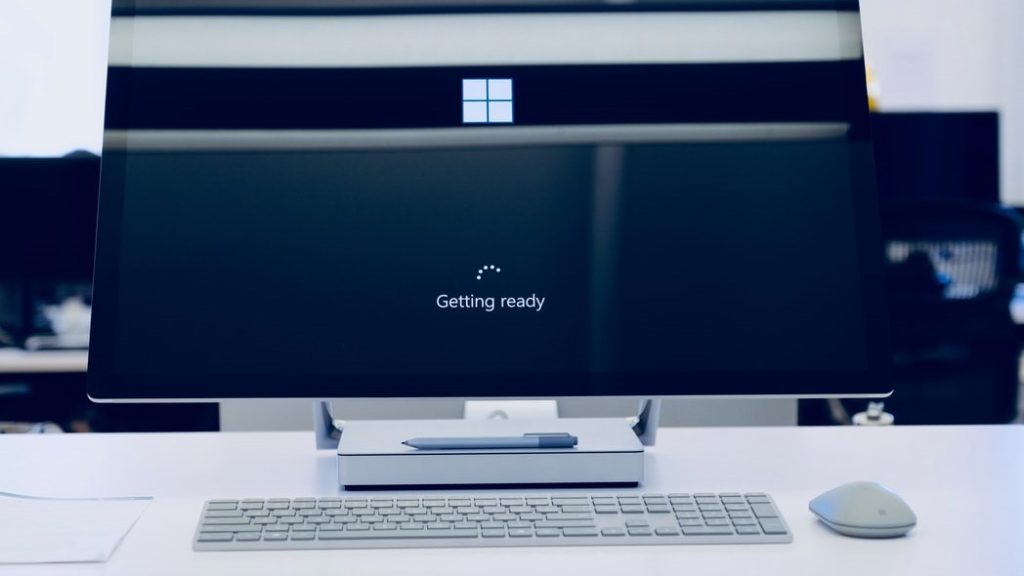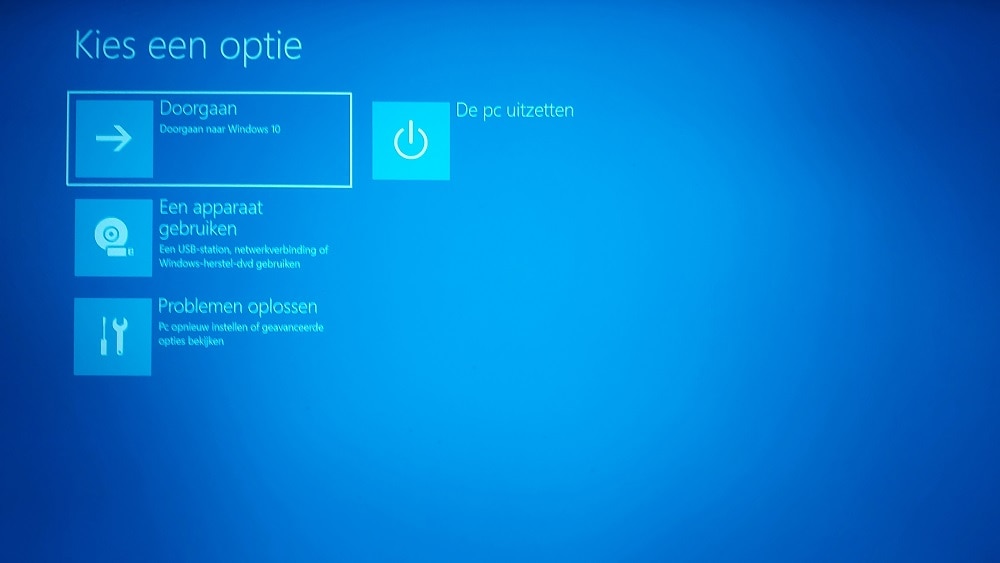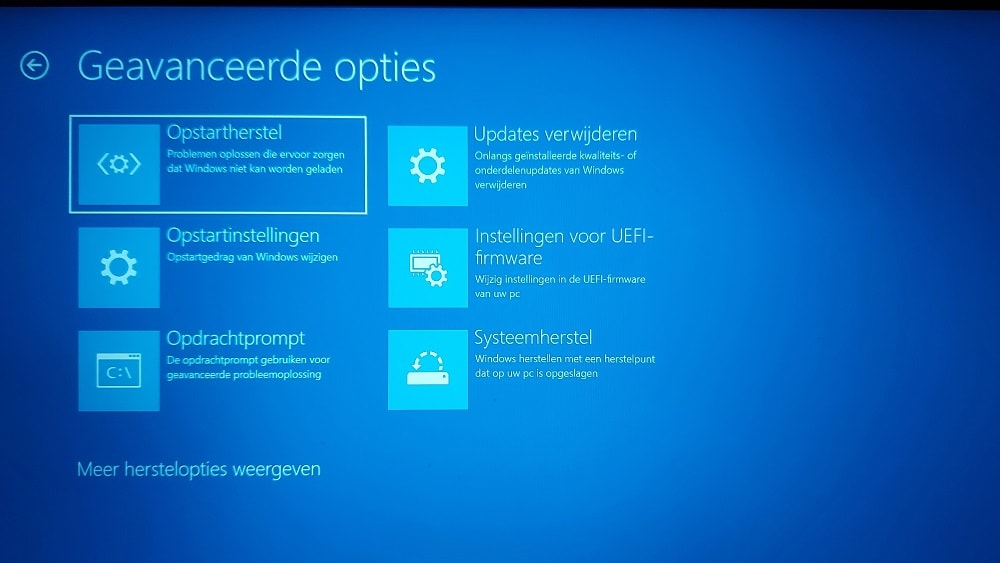
You start your work or school day. You just grabbed your coffee and started up your desktop or laptop. But instead of the familiar Windows 10 login screen, you see nothing. It’s a modern ghost story 👻: Windows 10 won’t boot.
Unfortunately, this is more often the reality than we’d like. How do you ensure that you can continue working again? You can read that in this article!
Stay calm
When your trusted computer doesn’t start up, you’re probably immediately stressed. “What if it doesn’t boot anymore? Have I lost all my files?” The most important thing is to stay calm because chances are one of the solutions below will do the trick.
The solutions in this list are listed in order of impact on your device and difficulty of execution. So start at the top of the list, because one of the first solutions may already solve your problem!
The following also applies to all solutions: if you cannot perform it yourself, take your desktop or laptop to a specialist.
#1 Check your screen
When you work on a desktop, you have to include your screen in your considerations. Check whether there are any lights on your screen and whether the brightness is set high enough.
If you have another monitor available, you can try connecting that monitor to your desktop. Do you have a laptop whose screen no longer works? Then this solution also works.
Do you get an image on another screen? Then it may be that your first screen and/or one of the cables is broken. Replace these cables and reboot your device and your primary display (if it’s a desktop). If you now get an image, then it is the cable. No picture yet? Then the screen is probably broken.
With a laptop this is a bit more difficult. If an external display works but your own display doesn’t, check out the following solutions or contact a repair center or the store where you bought the laptop (if your warranty has not expired).

#2 Check the power or battery
If your desktop or laptop does not start up completely, this may be due to the power supply or battery of the device. Therefore, check whether the power cable is properly inserted into the device.
Is the cable already in place? Then try to disconnect the power completely. Unplug the power cord and in the case of a desktop power supply, turn off the power supply switch.
Before plugging in the power again, press and hold your device’s power button for 10-30 seconds. This is called ‘power-cycling‘ and turns off all components in your desktop or laptop. Then you connect the device to the power and restart.
#3 Disconnecting external equipment
Every desktop and laptop has external equipment connected, such as a mouse or internet cable. Turn off your device and remove all connections from your device, except for the power cable and the cable that connects the display to your desktop (if it is a desktop).
Boot your device and see if Windows 10 boots up. If your system boots up completely, then the problem is with one or more of the external devices.
To find out which one this is, turn off the system. Then attach one of the external devices and reboot your device. Do this until Windows 10 does not boot.
The device you last connected is probably the cause of the problem, or you have too many external devices connected.
To check which of the two it is, swap the last connected external device with another external device. Windows 10 does start up now, then that one external device is the problem. Windows 10 does not start, then the amount of connected equipment is the problem.
#4 Check the storage media
If the storage medium on which Windows 10 is installed is faulty, Windows will not boot. To check if this is the case, remove the storage media. There are two different storage media in desktops and laptops namely HDDs and SSDs.
Pay attention!
To remove your hard drive, you need to open your desktop or laptop. This may void the warranty on the device. Check this carefully in advance!
Open your desktop and find the storage medium where Windows 10 is installed. Most hard drives can be found in the bottom of a desktop, while an SSD is often mounted on the wall of the PC tower (see image below) or on the motherboard.

Carefully remove the HDD or SSD and connect it to another device. For this you need a SATA to USB cable or you connect the storage medium internally with a SATA cable in another desktop.
Does your HDD or SSD also not work if you connect it to another device? Then there is a good chance that it is defective and needs to be replaced.
#5 Boot Windows in safe mode
Booting your desktop or laptop in safe mode means that Windows boots with only the programs that Windows really needs.
If Windows 10 starts up after performing this step, then the problem is with a (recently) installed program. By uninstalling and restarting this program, Windows will reboot.

When Windows 10 does not start, the Windows recovery screen opens automatically after three startups (see image above). If this screen does not open, you need a recovery drive on a USB stick. To create this you need access to another device with Windows 10.

On this screen, click on Troubleshoot and then Advanced options. Under advanced options, click on Startup Settings and then click on Restart. After your desktop or laptop has rebooted, you will be given the choice between the standard safe mode or the safe mode that allows you to use your internet in safe mode.
It doesn’t matter which one you choose, but you won’t be able to access the internet when you choose the default safe mode. If Windows 10 boots normally, then it is probably due to a recently installed program. By removing it, Windows 10 will restart outside of safe mode.
#6 Automatic Startup Repair
From the Windows recovery environment you have the option to perform an automatic startup repair. An automatic startup repair checks for issues with partitions, system files, and drivers, among other things.
The automatic startup repair is under Troubleshooting > Advanced options. Then click Startup Repair and let Windows 10 do the repairs. If problems are found and fixed, Windows 10 will boot normally again.
#7 System Restore
A system restore is possible if Windows 10 has already created a restore point in the past. This is a backup of an earlier state of Windows 10. You can check if you have a restore point on your device by going to Troubleshoot > Advanced options in the Windows recovery environment. Then click on System Restore.
After the device restarts, sign in to your Windows account. Now you will be presented with a list of restore points. Select the most recent restore point and follow the steps on your screen.
Don’t see any restore points? Then the option to create this automatically is not enabled on Windows 10 and you cannot use this solution.
#8 Roll back the version of Windows
This solution is similar to a system restore at #7. You roll back Windows 10 to an earlier version.
The difference is that a system restore is not necessarily a previous version of Windows 10, as is the case with this solution. Windows can only be rolled back within 10 days of the last update performed, because the backup will be deleted after this.
You can roll back the previous version of Windows 10 via the same screen as with the previous two solutions. Under Advanced options, click Uninstall updates. When rolling back, the system removes applications and system settings, but keeps personal files.
#9 The Command Prompt
The command prompt is a program in Windows in which you enter commands (command lines). The average Windows user will do little in this program, but the Command Prompt is still an extremely powerful tool.
You open the command prompt in the same environment as in the previous four solutions. Troubleshooting > Advanced Options > Command Prompt. This opens the screen below. From here, perform the following two solutions.

Command Prompt: bcdboot
‘Bcdboot’ is the command that copies all necessary boot files to the system partition, which may cause Windows to boot again. For this it is important that you know the letter of the partition where Windows 10 is installed, because you have to enter it.
In the command prompt, enter the following command: bcdboot x:\windows /l nl-nl . Change the letter ‘x’ to the correct letter of your Windows partition. Press enter and wait until you see the message ‘Boot files successfully created’. Now reboot your device.
Command Prompt: sfc
‘Sfc’ stands for ‘system file checker’. Where the previous solution only checks the boot files, this command looks at all system files. It is possible that another system file is damaged, which means that Windows will no longer start up. Enter the following command line in the command prompt:
sfc /scannow /offbootdir=x:\ /offwindir=y:\windows
Replace the ‘x’ after ‘offbootdir’ with the drive letter on which the boot directory is located and the ‘y’ after ‘offwindir’ with the drive letter on which Windows 10 is installed. Often this is the same letter, but this depends on how the format of your storage media is.
#10 Reset BIOS
The chance that you need to perform this step is small, since changes in the BIOS are rare. If you have recently made any changes to the BIOS, follow these steps. In all other cases I advise against resetting your BIOS yourself, because this can cause more problems.
You open your BIOS by pressing the appropriate button on the home screen of your device. Which button this is, differs per motherboard brand.
The most common keys are F1, F2, F10, ESC, or DEL, but usually show the correct key on your screen before Windows 10 starts up. Please note that not every BIOS screen will look the same as the image below.

In the BIOS window, go to the ‘Exit’ tab. Hit enter and you will be presented with several options to reboot your device. Choose here for ‘load default settings’. Selecting this option loads the BIOS factory settings and reboots the device.
#11 Reinstall Windows 10
If none of the solutions work, then you have no choice but to reinstall Windows 10. If Windows 10 still doesn’t work after you reinstall it, there’s a good chance that one or more parts in your desktop or laptop are broken.
#12 Did nothing work?
Have you tried all solutions and Windows 10 still won’t boot? Then there is a good chance that a part of the hardware of your desktop or laptop is broken. You can of course have this repaired, but in the case of a laptop – in which more and more is now welded to the motherboard – it may be time for a new laptop.
There is a lot to consider when buying a new laptop, because you want to get value for money. Some people want the best touchscreen laptop, while others need a budget laptop.
- Do you often edit photos or videos? Then a laptop for photo editing or a laptop for video editing is ideal for you!
- Do you mainly use your laptop for your studies? Then you want a good laptop for students.
- Can’t choose between a laptop and a tablet? Then choose a 2-in-1 laptop. Then you have the best of both worlds.
Conclusion
Hopefully one of these fixes will help and boot Windows 10 back to normal. Do you have any questions or comments about the solutions in this list? Then we would like to hear more about it. Thank you for reading!